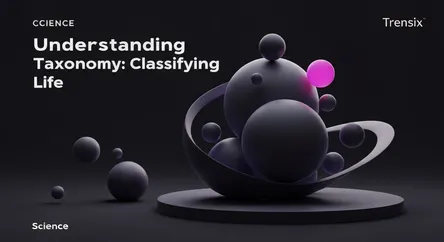Science
Understanding Taxonomy: Classifying Life

An introduction to taxonomy, the science of classifying living organisms, and its critical importance in conservation, medicine, and research.
What is it?
Taxonomy is the science of naming, describing, and classifying all living and extinct organisms based on shared characteristics. This field organizes life into a hierarchical system with ranks such as domain, kingdom, phylum, class, order, family, genus, and species. Pioneered by Carl Linnaeus, this system assigns a universal, two-part scientific name to every organism, a practice known as binomial nomenclature. This standardized naming, like Homo sapiens for humans, allows scientists worldwide to communicate unambiguously, avoiding the confusion caused by common names that vary by region and language.
Why is it trending?
Taxonomy is fundamental to understanding Earth's biodiversity, a topic of increasing urgency. The field is advancing with new technologies, especially DNA sequencing, which offers deeper insights into evolutionary relationships. This genetic data refines traditional classifications that were based solely on physical traits. As scientists race to document species before they become extinct due to environmental changes, these modern taxonomic tools are crucial for global scientific collaboration. This renewed focus helps build a more accurate and comprehensive "tree of life" before parts of it disappear forever.
How does it affect people?
Taxonomy is foundational to biology and has significant real-world applications. It is critical for conservation efforts, as identifying and classifying species helps direct resources to protect endangered ones. In public health, taxonomy is essential for identifying invasive species and understanding disease vectors. The practice also supports drug discovery and agriculture by helping researchers identify organisms with beneficial properties, like plants with medicinal value. By providing a clear framework for all life, taxonomy underpins effective environmental management and sustainable use of biological resources.